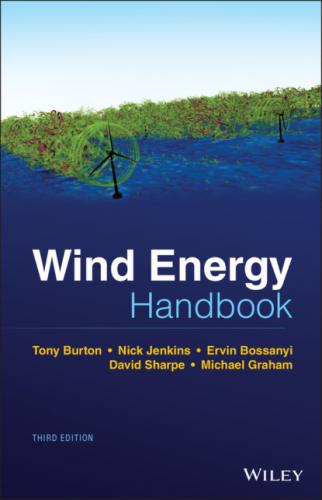Streamlined bodies such as aerofoils taper gently in the aft region so that the adverse pressure gradient is fairly small and separation is delayed until very close to the trailing edge. This produces a very much narrower wake and a very low drag because significant pressure drag is avoided.
On an aerofoil at higher angles of attack, stall onset may be delayed by earlier transition in the suction surface boundary layer. The phenomenon may also include the occurrence of separation bubbles where a laminar separation is followed immediately by transition in the separated shear layer and then turbulent mixing causing reattachment and formation of a ‘bubble’ on the surface. Because of these effects, the onset of turbulence in the boundary layer and particularly the occurrence of separation bubbles controls the angle of attack at which an aerofoil stalls and the type of stall that occurs. Because turbulence in the free stream and surface roughness both tend to promote transition, they can both affect the lift and drag of bodies. In the case of turbulence, the length scale must be small to affect the boundary layer transition. For an aerofoil the effects are particularly influential around the stall region, and on many aerofoils that operate in regions of dirty air close to the ground, it is advisable to periodically clean accumulated dirt or insects from the leading edge regions. More modern designs seek profiles that are relatively insensitive to surface roughness around the leading edge. As on all bodies on which separated flow occurs, early transition when it delays or suppresses separation reduces the pressure drag.
A useful categorisation of aerofoil stall types is given by Gault (1957).
A3.5 Definition of lift and its relationship to circulation
The lift on a body immersed in a flow is defined as the force on the body in a direction normal to the incident flow direction.
In subsonic steady flow, a body only generates lift if the flow incorporates a circulatory component about the body. The body section is then said to have circulation. This type of flow may be illustrated by that which occurs about a spinning circular cylinder in a uniform incident flow field of velocity U. In the resulting flow field, as shown in Figure A3.7, the velocity above the cylinder is increased and the static pressure reduced. Conversely, the velocity beneath is slowed and the static pressure increased. An upwards force on the cylinder results with a strong component normal to the free stream, the lift force.
The phenomenon of lift generated by a spinning cylinder is known as the Magnus effect after its original discoverer and explains, for example, why spinning balls veer in flight.
The circulatory component of this flow is shown in Figure A3.8 and has the same distribution of velocity outside the boundary layer as a line vortex.
The lift force due to circulation is given by the Kutta–Joukowski theorem, called after the two pioneering aerodynamicists who, independently, realised that this was the key to the understanding of the phenomenon of lift generated in subsonic flow on all bodies, including the spinning cylinder:
Figure A3.7 Flow past a rotating cylinder.
Figure A3.8 Circulatory flow round a rotating cylinder.
Here Γ is the circulation, or vortex strength, defined as the integral
around any path enclosing the body, and v is the velocity tangential to the path s.
Two‐dimensional inviscid potential flow about a general 2‐D body section is non‐unique and is only fixed by defining where the flow separates. A non‐rotating body can have a circulatory flow about any section, the circulation being controlled by where on the section the boundary layers separate. On an aerofoil section, pre‐stall, the sharp trailing edge is the only edge at which the flow separates. Such a flow about an aerofoil as shown in Figure A3.9 can be composed of (i) a non‐circulatory flow induced by the approaching free stream, and (ii) a purely circulatory flow that is equivalent to a distribution of vorticity around the section. In general, neither of these flows separate from the trailing edge, i.e. appropriately, but by adding a suitable amount of the latter, thus fixing the circulation, to the former (iii) a composite flow is obtained that does separate from the trailing edge. The condition enforcing separation of the inviscid flow from the trailing edge is known as the Kutta–Joukowski condition. At large distances radially from the axis of a (quasi‐) 2‐D body, the flow field is a combination of the uniform incident flow with a vortex flow if the body has lift (and a line‐source flow if it has significant viscous drag.) The v‐component of the free stream U in Eq. (A3.2) (and similarly the source flow component if present) integrates around the closed circuit to zero. The v‐component due to a line vortex, taken, for example, on a circular path concentric with the vortex, is v = k/r, where k is a constant. This integrates around the circuit in Eq. (A3.2) to the circulation:
Figure A3.9 Flow past an aerofoil at a small angle of attack: (a) inviscid flow, (b) circulatory flow, and (c) real flow.
(easily seen for circular circuits defined by constant r, but true for all circuits enclosing the vortex). Hence the section lift/unit span is
In the case of streamlined lifting bodies such as aerofoils, the circulation Γ that is fixed by the Kutta–Joukowski condition at the trailing edge can be shown to increase with angle of attack α in proportion to sin α. Although the velocities and pressures above and below the aerofoil at the trailing edge must be the same, the particles that meet there are not the same ones that parted company at the leading edge. The particle that travelled over the aerofoil upper surface, even though a longer distance, normally reaches the trailing edge before the one travelling over the shorter lower surface because its speed‐up by the circulation is proportionately greater.
In
